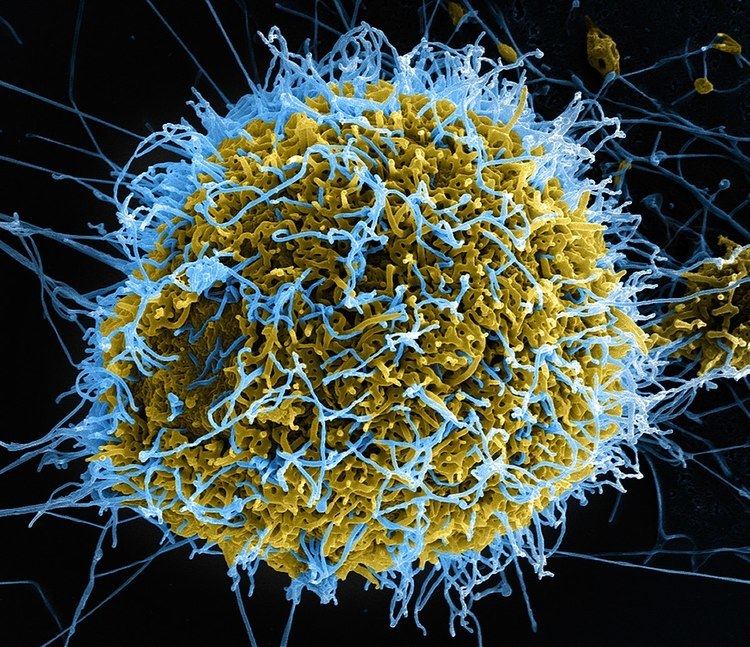ICD-10 B94.8 | ||
 | ||
Post-Ebola virus syndrome (or post-Ebola syndrome) is a post-viral syndrome affecting those who have recovered from infection with Ebola. Symptoms include joint and muscle pain, eye problems, including blindness, various neurological problems, and other ailments, sometimes so severe that the person is unable to work. Although similar symptoms had been reported following previous outbreaks in the last 20 years, health professionals began using the term in 2014 when referring to a constellation of symptoms seen in people who had recovered from an acute attack of Ebola disease.
Contents
Signs and symptoms
Researchers have been aware of a group of symptoms that frequently followed Ebola virus disease for 20 years, but it became more widely reported with the large number of survivors of the deadly epidemic in 2014. Post Ebola syndrome may manifest as joint pain, muscle pain, chest pain, fatigue, hearing loss, hair loss, cessation of menstruation, and poor long term health. Some survivors report neurological issues including memory problems and anxiety attacks. Vision loss is also frequently reported, along with eye pain, inflammation, and blurred vision. The New England Journal of Medicine reports that symptoms include lethargy, joint pains, hair loss, and vision loss, frequently to the point of near blindness, and uveitis.
Cause
Although there is some progress that may potentially help Ebola survivors, adequate funding and further research is required to help provide more answers about post-Ebola Syndrome. Studies from previous outbreaks reveal that the virus is able to survive for months after recovery in some parts of the body like eyes and testes, where the immune system cannot reach. It is not known if the neurologic symptoms seen in survivors are a direct result of the virus or, instead, triggered by the immune system’s response to the infection. It is known that Ebola can trigger a massive cytokine storm that can cause bleeding throughout the body, including the brain, which may explain various neurological symptoms that have been reported.
Viral persistence
According to a review by Brainard, et al., Ebola virus was identified in almost 3 out of 4 seminal fluid samples ( 18 survivors) almost 4 months after initial infection, with the last positive samples being more than 6 months (203 days) after infection had occurred. Another aspect of survivors of the Ebola virus, is that it could become sexually transmitted, as the virus is present in semen nine months after the individuals are declared free of Ebola.
Diagnosis
In terms of diagnosis the individual may show sensitivity to light or eye redness when ocular problems are suspected. Neurologically the individual's coordination, gait and frontal release signs should be observed.
Management
Management depends on the symptoms displayed, for example, if the individual indicates muscular-skeletal pain then paracetamol may be administered. If the individual presents with ocular problems, then prednisone and cyclopentolate may be used for treatment, according to the WHO.
